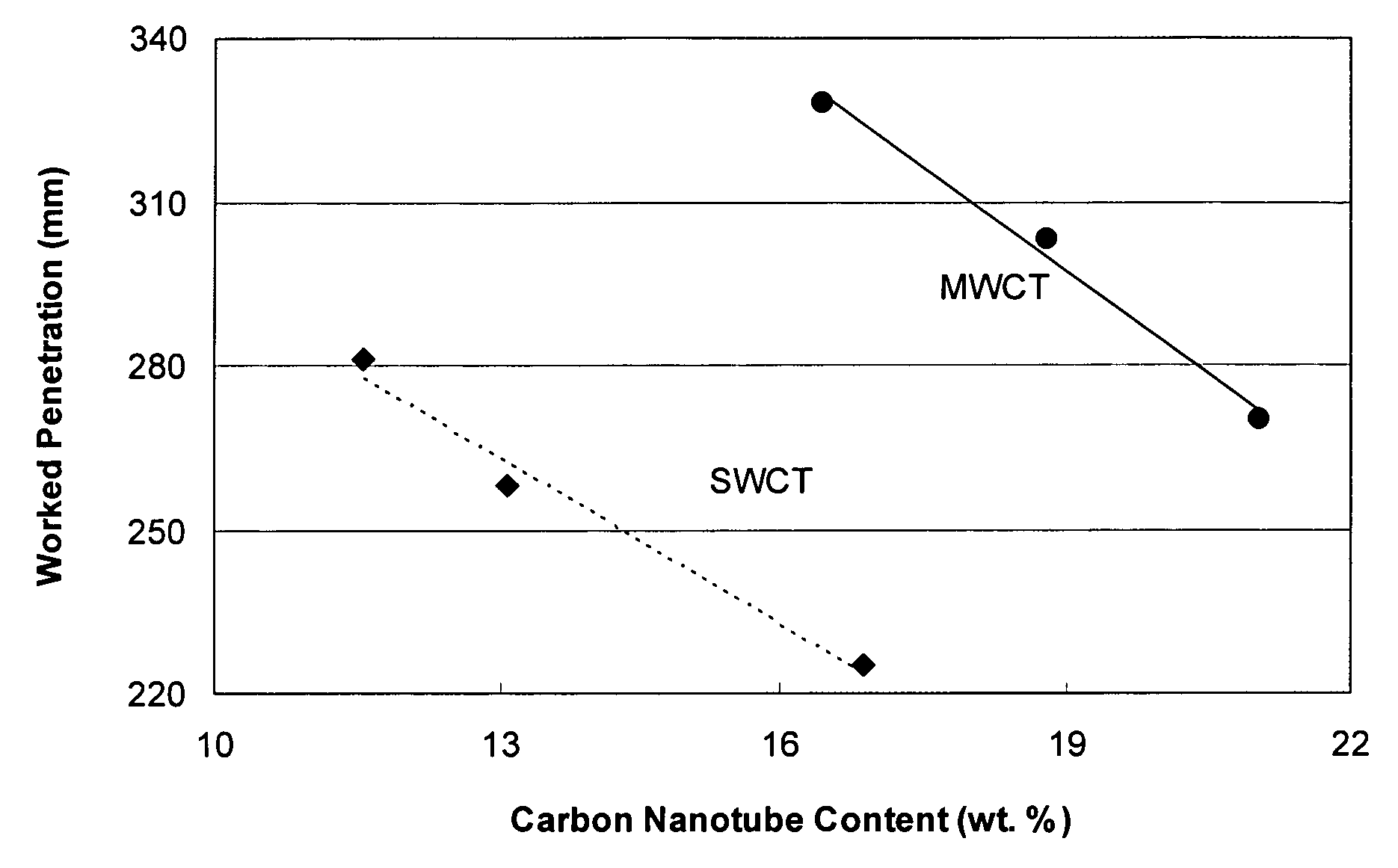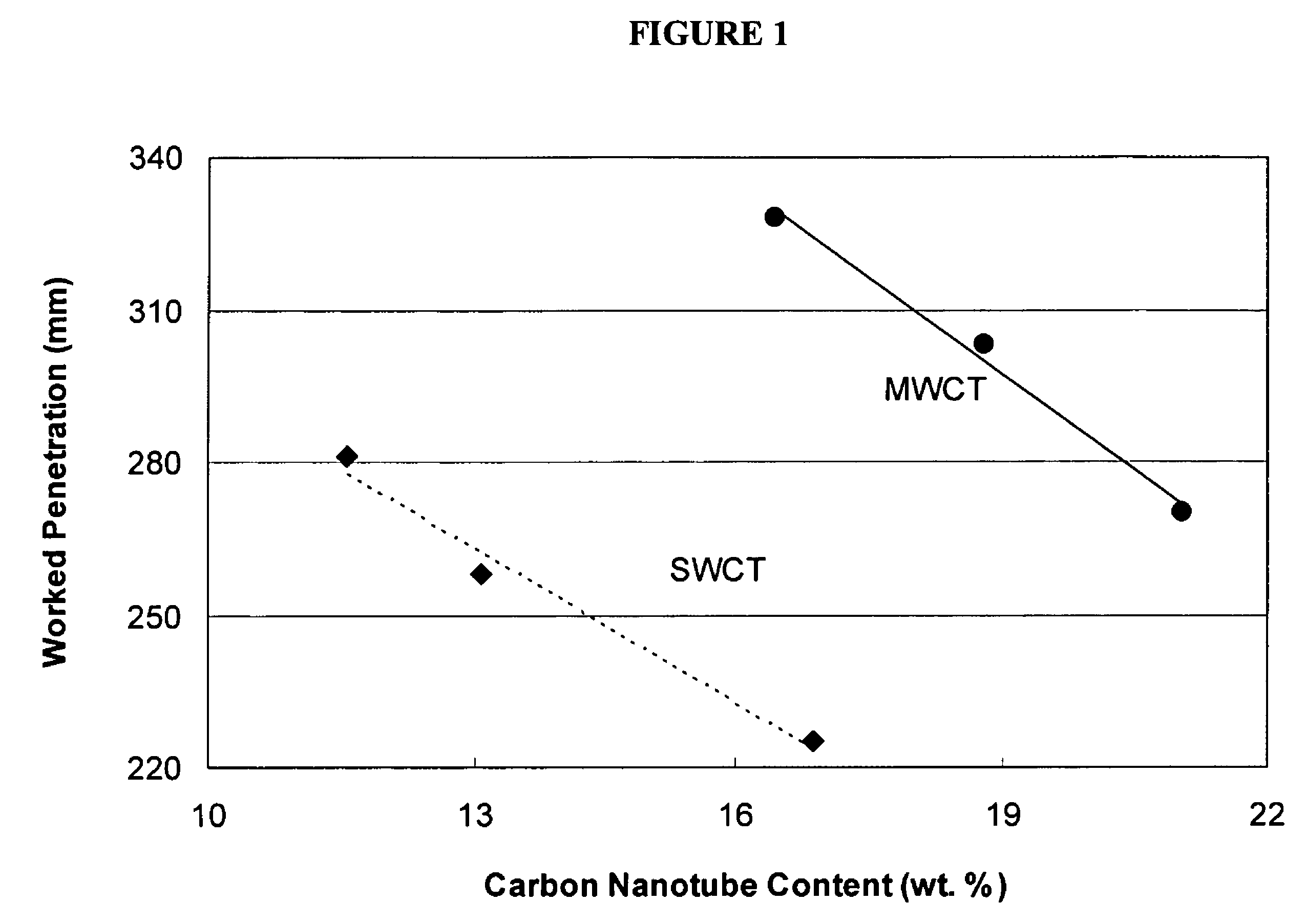Carbon nanoparticle-containing nanofluid
a technology of carbon nanotubes and nanoparticles, which is applied in the direction of lubricant compositions, other chemical processes, chemistry apparatus and processes, etc., can solve the problems of affecting the development of energy-efficient heat transfer fluids, carbon nanotubes are not soluble in any known solvent, and achieve the effect of improving thermal conductive properties
- Summary
- Abstract
- Description
- Claims
- Application Information
AI Technical Summary
Benefits of technology
Problems solved by technology
Method used
Image
Examples
example 1
Acid Treatment of Carbon Nanotubes
[0142]A suspension of carbon nanotubes (5% by weight) in sulfuric acid / nitrate acid (3:1) was heated at 110° C. under nitrogen for about 3 days. The suspension was then diluted with deionized water and filtered to remove the acids. After further washed with acetone and deionized water, the solid was dried in an oven at about 60 to 70° C. overnight.
example 2
Preparation of a SWNT-Containing Nanofluid
[0143]A SWNT nanofluid in EG Solution was prepared by dispersing dry carbon nanotubes into a mixture of the thermal transfer fluid (i.e., EG Solution) and a surfactant as a dispersant according to the composition and condition specified in Table 3. The dispersion was carried out by ultrasonication intermittently for 15 min using Digital Sonifier Model 102C by Branson Ultrasonics Corporation (Monroe Township, N.J.), to avoid causing structural damage to carbon nanotubes. Typically, the carbon nanoparticle-containing mixture is energized for 1-2 min with a break about 5-10 min in between.
[0144]
TABLE 3ComponentDescriptionWeight (%)Carbon nanotubeF-SWNT-CNI, untreated0.05SurfactantNanolab dispersant5.00Heat transfer fluidEG Solution94.85Ultrasonication Time15 minDispersion QualityGoodDispersion StabilityMore than one week
example 3
Preparation of a SWNT-Containing Nanofluid
[0145]A nanofluid with the composition specified in Table 4 was prepared as described in Example II.
[0146]
TABLE 4ComponentDescriptionWeight (%)Carbon nanotubeF-SWNT-CNI, untreated0.10SurfactantSDBS1.00Heat transfer fluidEG Solution98.90Ultrasonication Time20 minDispersion QualityGoodDispersion StabilityMore than one month
PUM
| Property | Measurement | Unit |
|---|---|---|
| distance | aaaaa | aaaaa |
| angle | aaaaa | aaaaa |
| angle | aaaaa | aaaaa |
Abstract
Description
Claims
Application Information
 Login to View More
Login to View More - R&D
- Intellectual Property
- Life Sciences
- Materials
- Tech Scout
- Unparalleled Data Quality
- Higher Quality Content
- 60% Fewer Hallucinations
Browse by: Latest US Patents, China's latest patents, Technical Efficacy Thesaurus, Application Domain, Technology Topic, Popular Technical Reports.
© 2025 PatSnap. All rights reserved.Legal|Privacy policy|Modern Slavery Act Transparency Statement|Sitemap|About US| Contact US: help@patsnap.com



